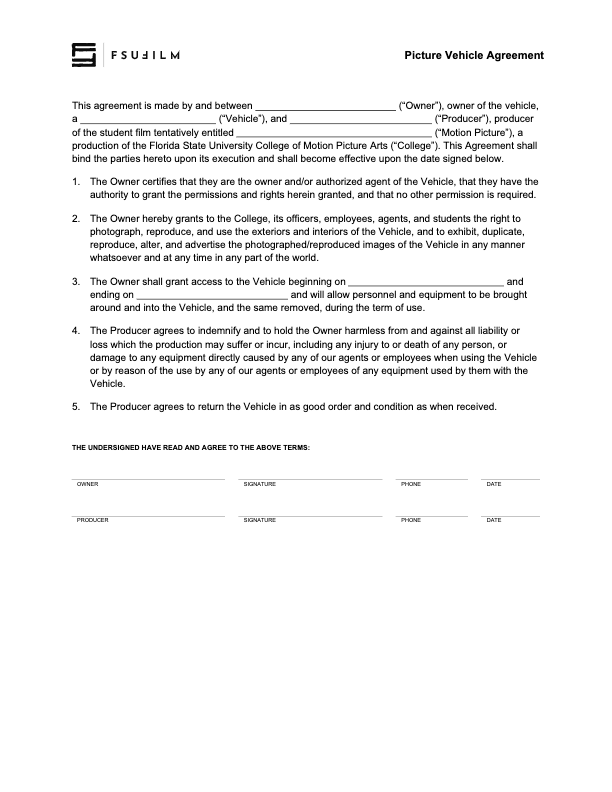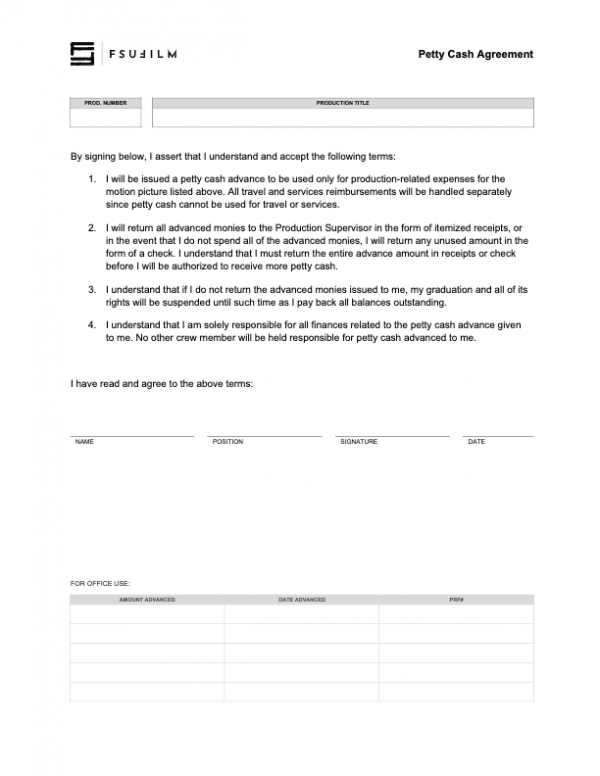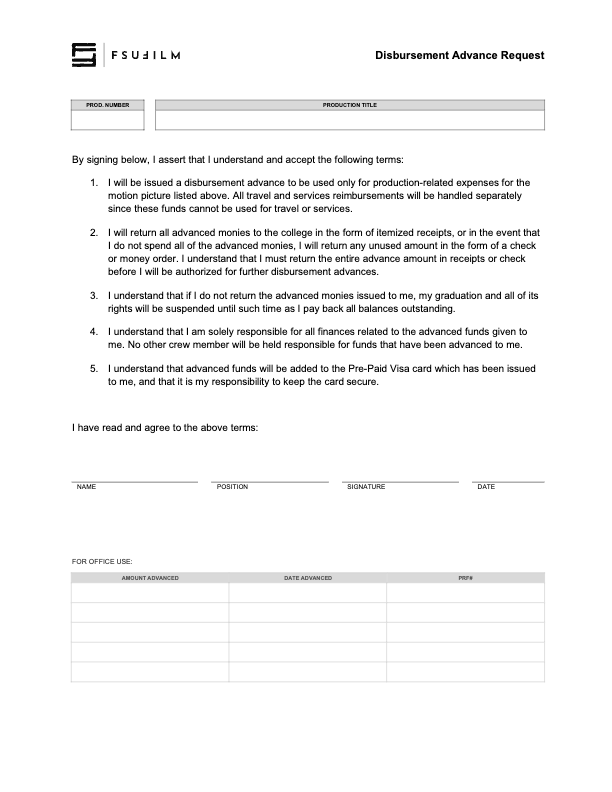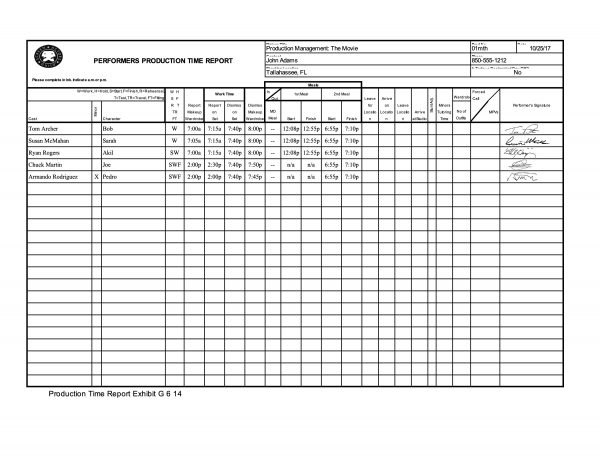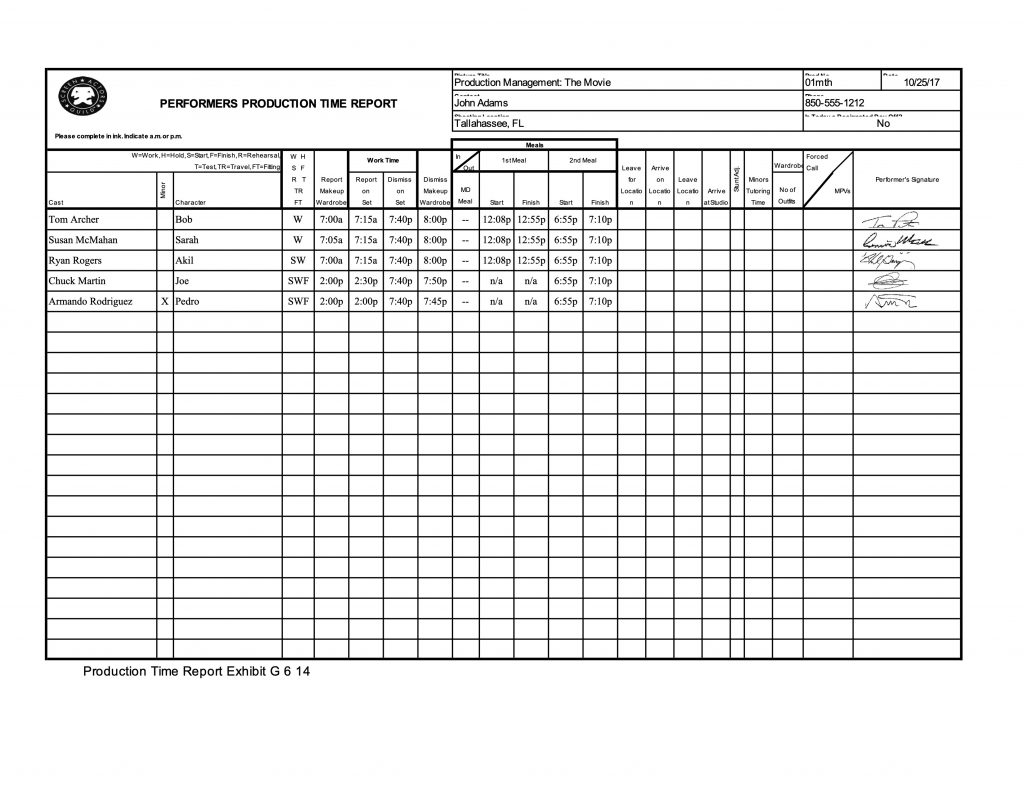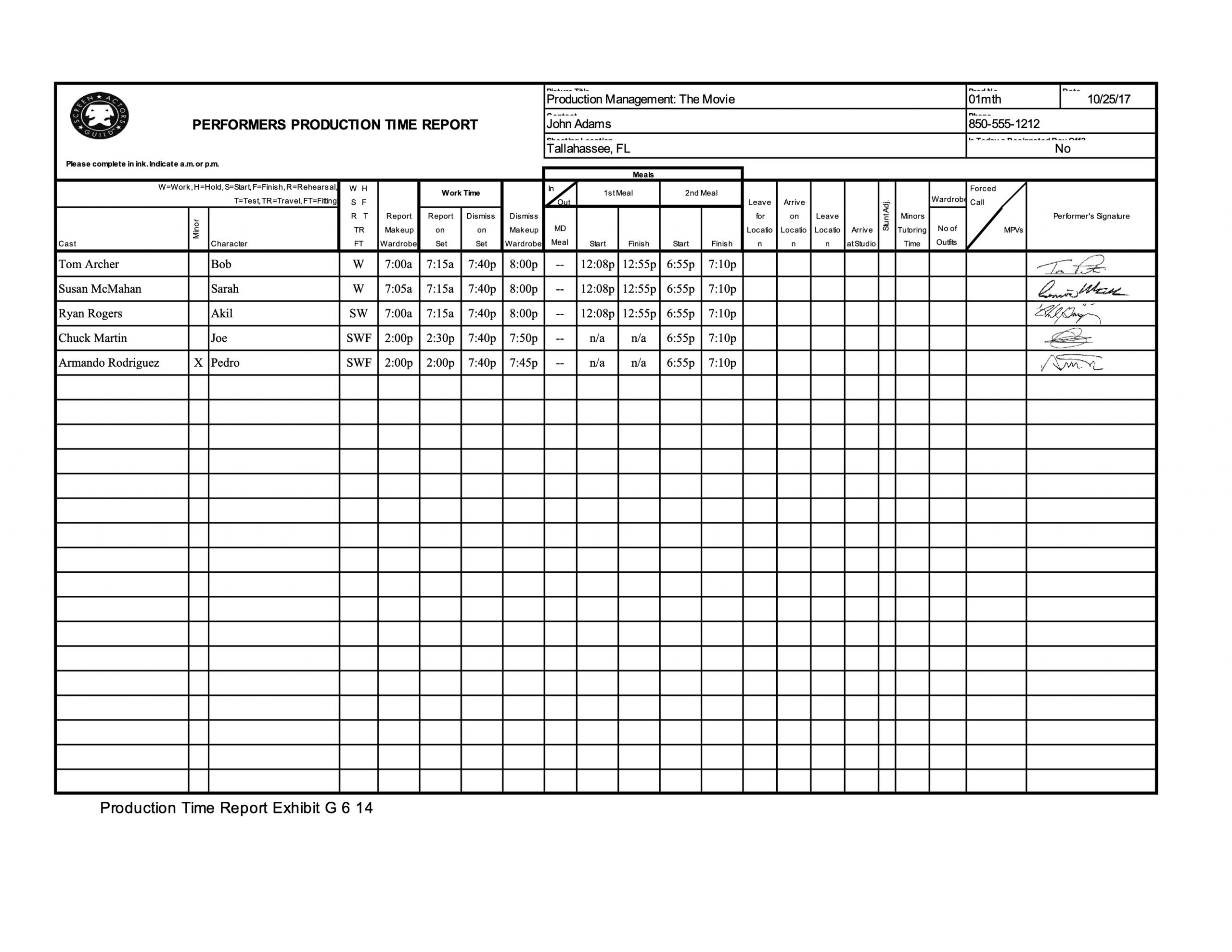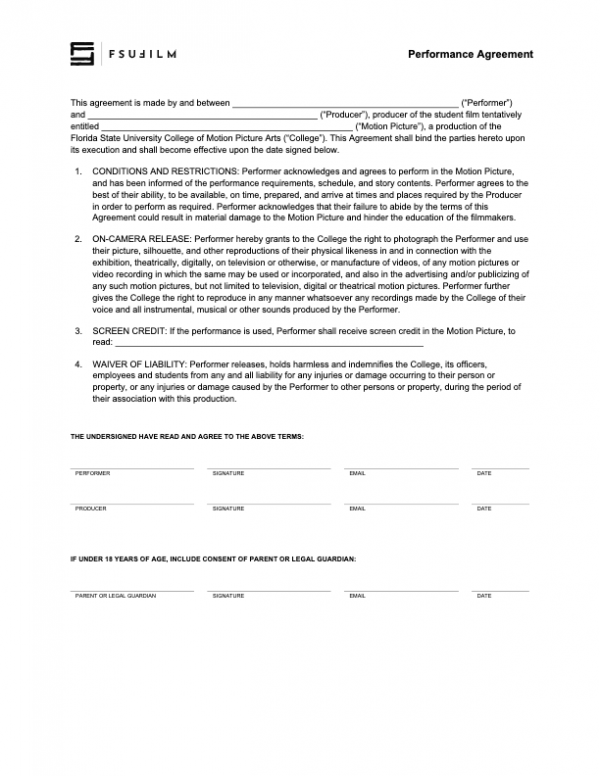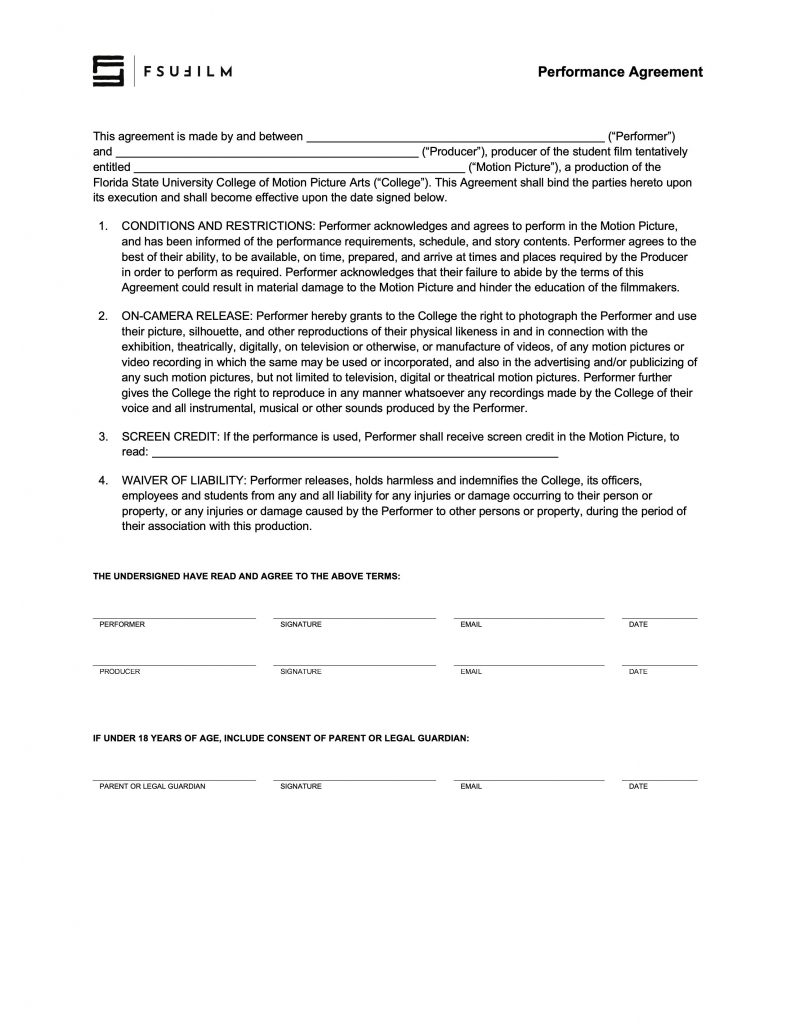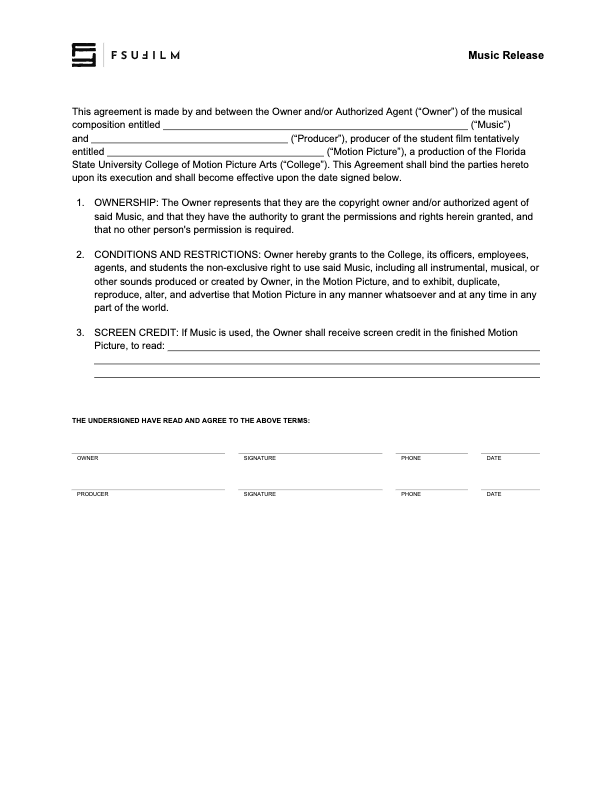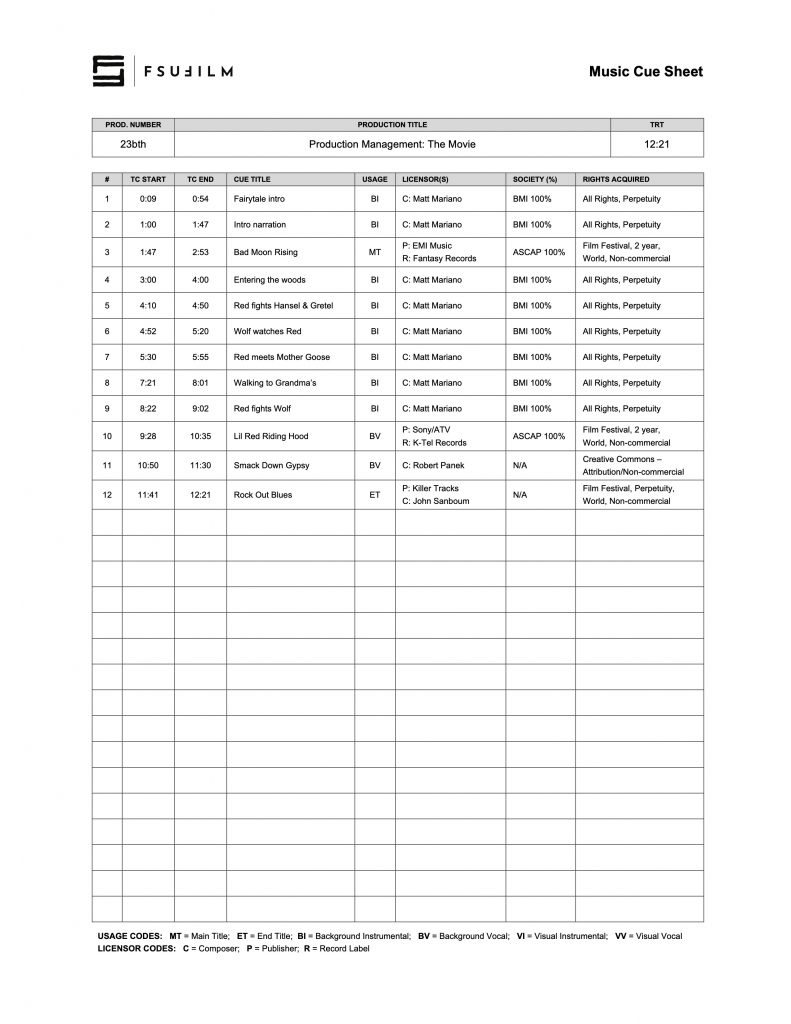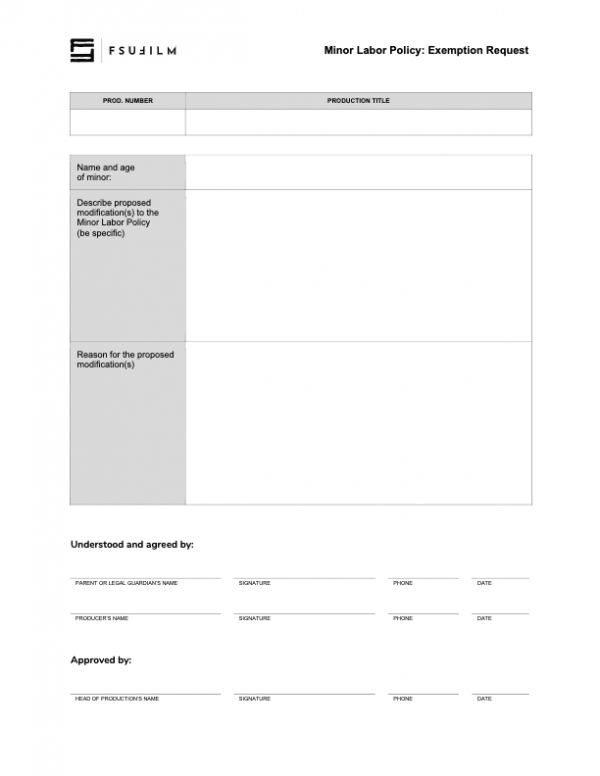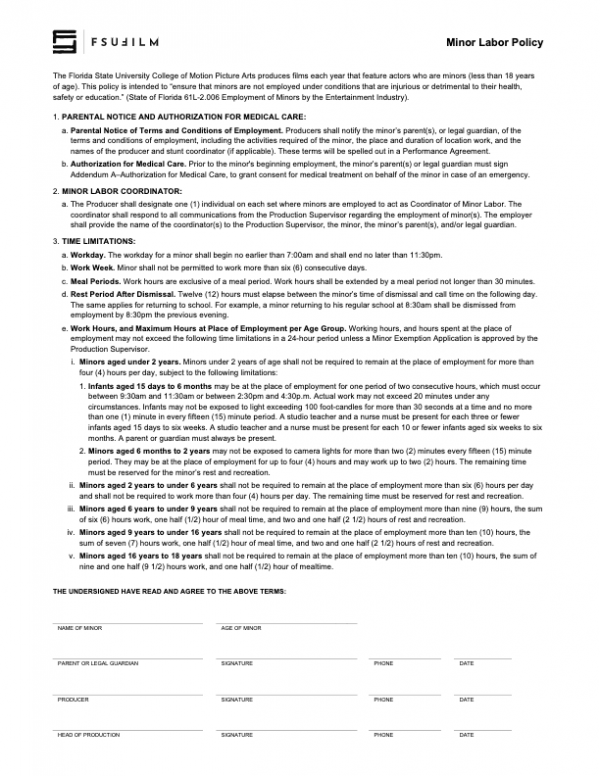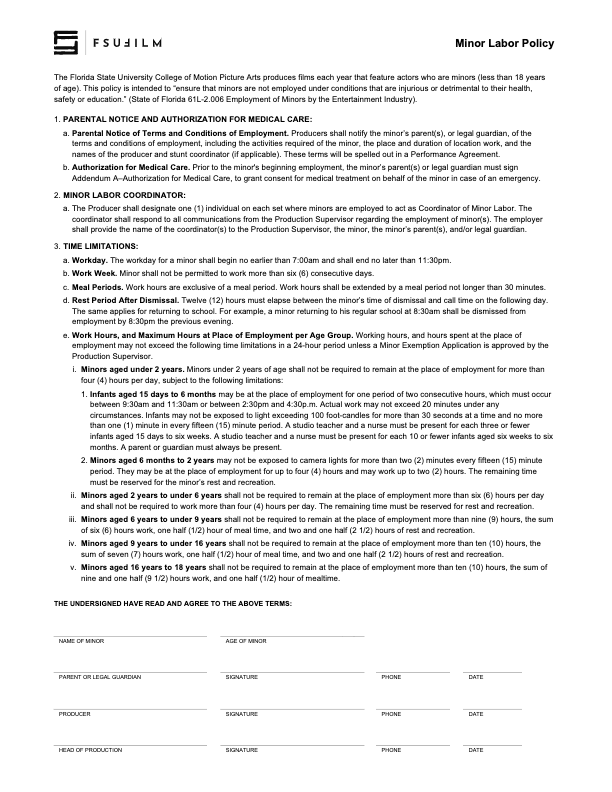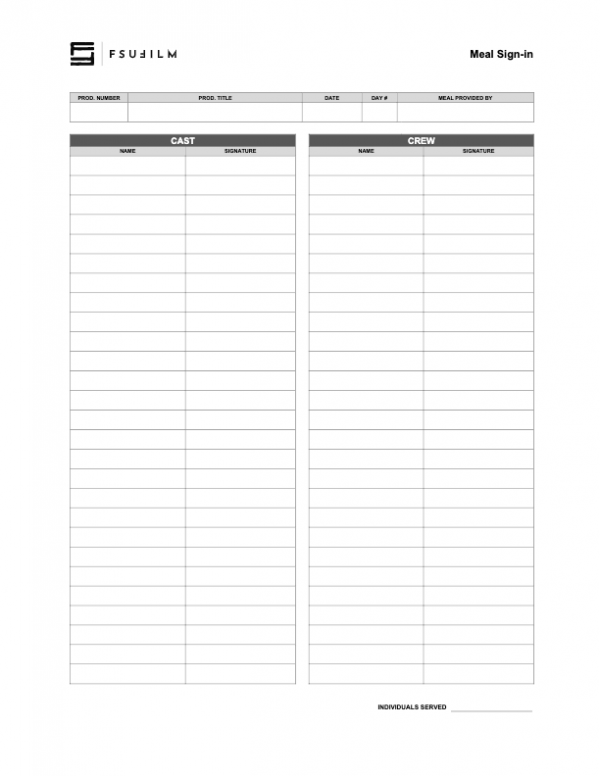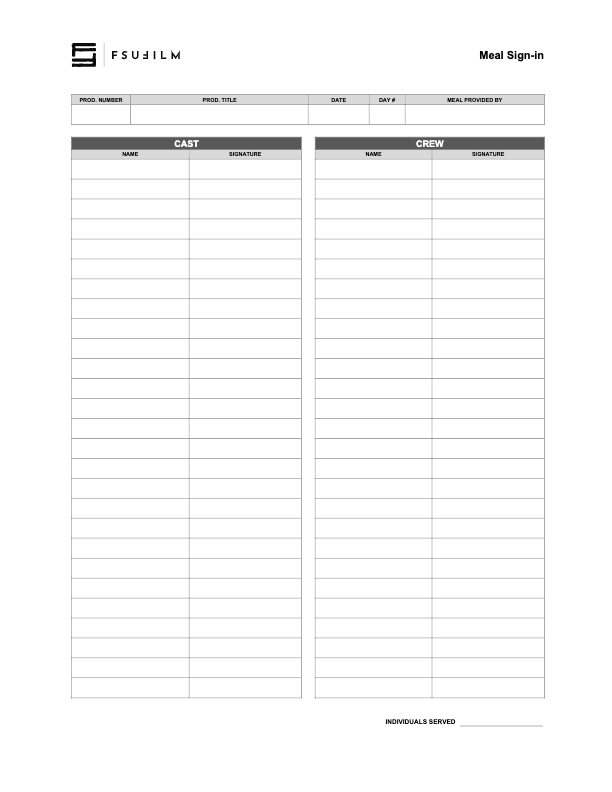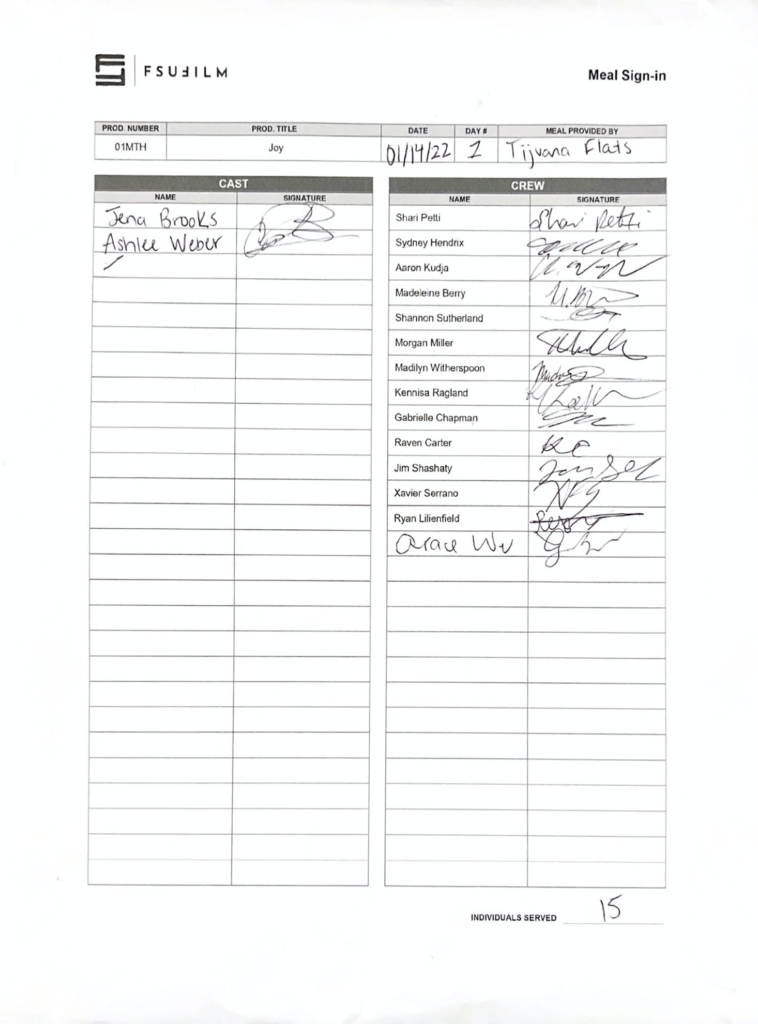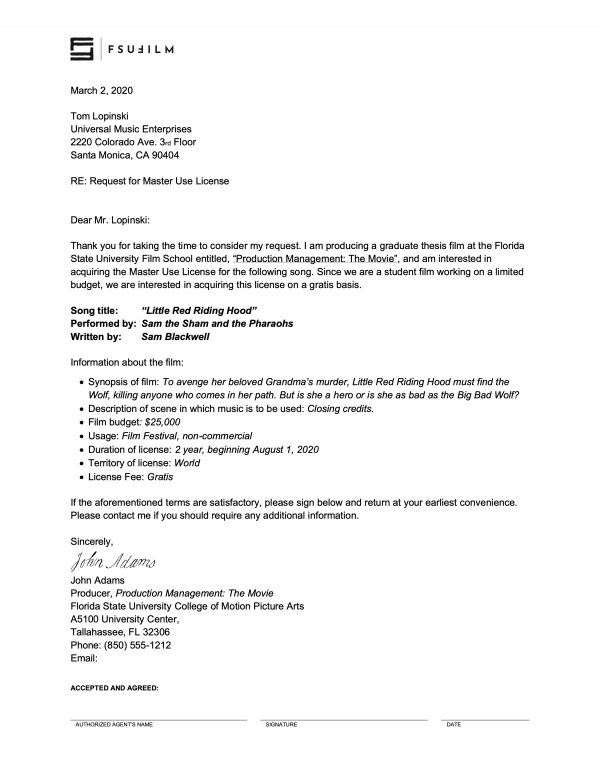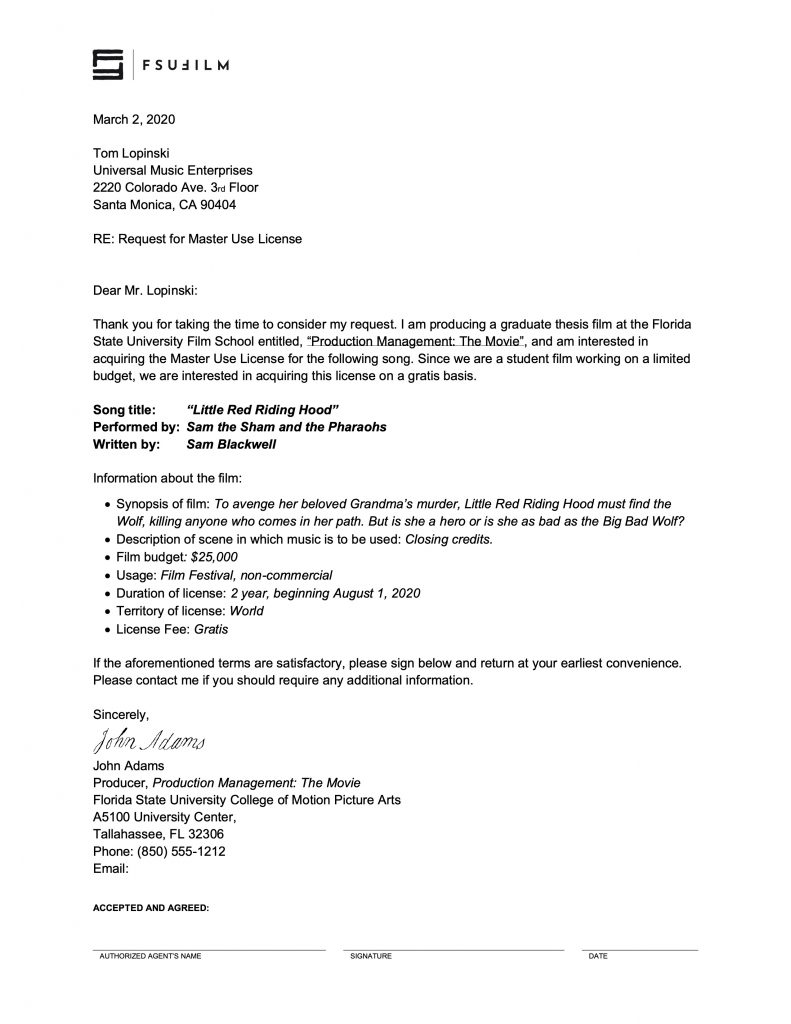INSTRUCTIONS
A master use license is the right to synchronize a sound recording with your visual image. You clear this right with the record label who owns the sound recording you would like to use.
Check the liner notes of the recording to find out which company this is. Alternatively, you can get contact information for record labels by contacting either ASCAP or BMI. You will be provided with a contact at the record label’s Business Affairs Department.
Getting the rights could be as simple as sending letters to the publisher and record label, having them sign and return them. However, you may be required to complete their licensing agreements instead. If this is the case, make sure you have the Head of Production review the agreement before you sign it, to ensure we have the proper releases.
You must get each license for at least:
- Two-years
- Film festival
- Non-commercial
- World rights
Note that if you do not plan to use the original sound recording, but rather plan to reproduce a specific musical composition in your film, you need to acquire a Synchronization License instead.
